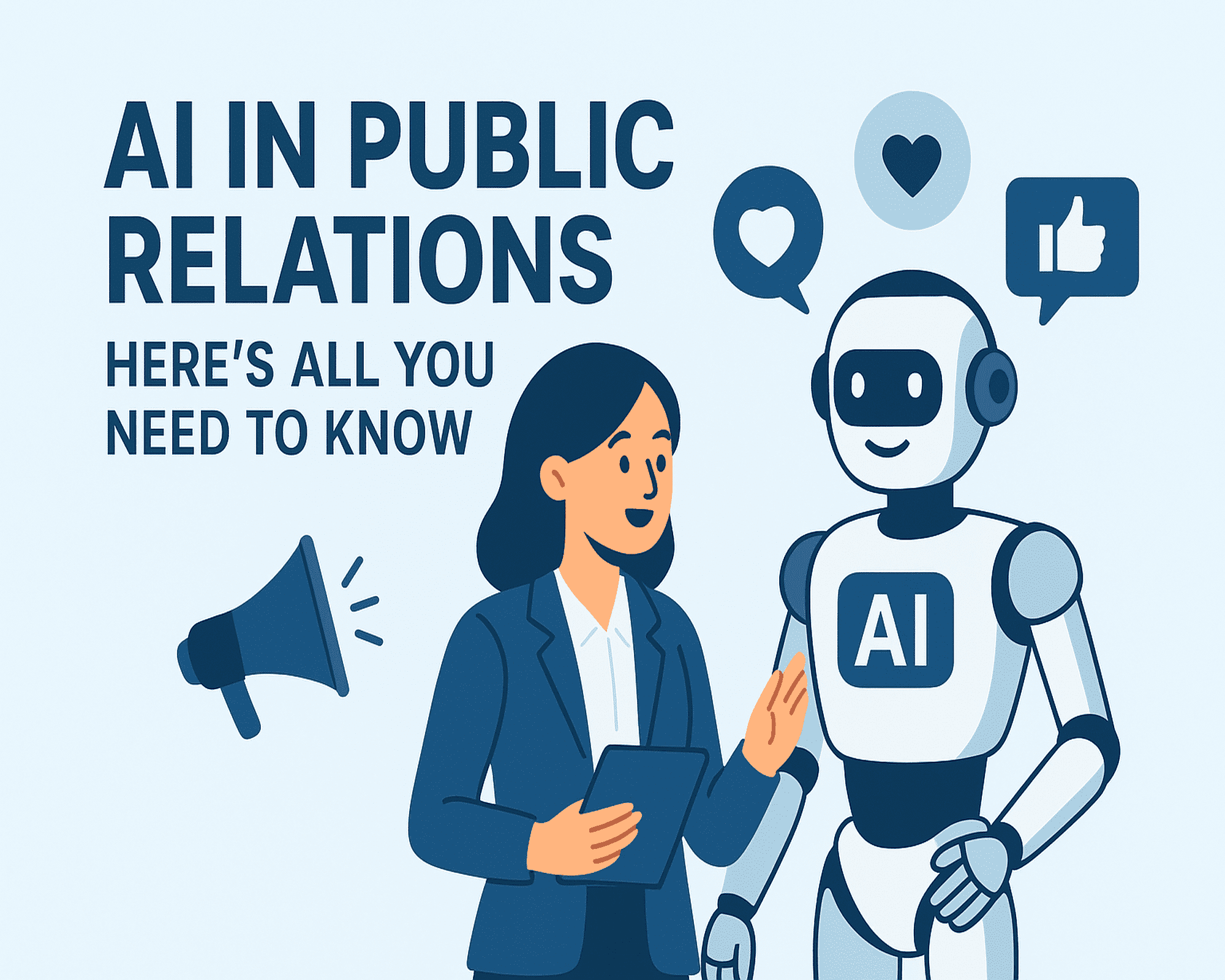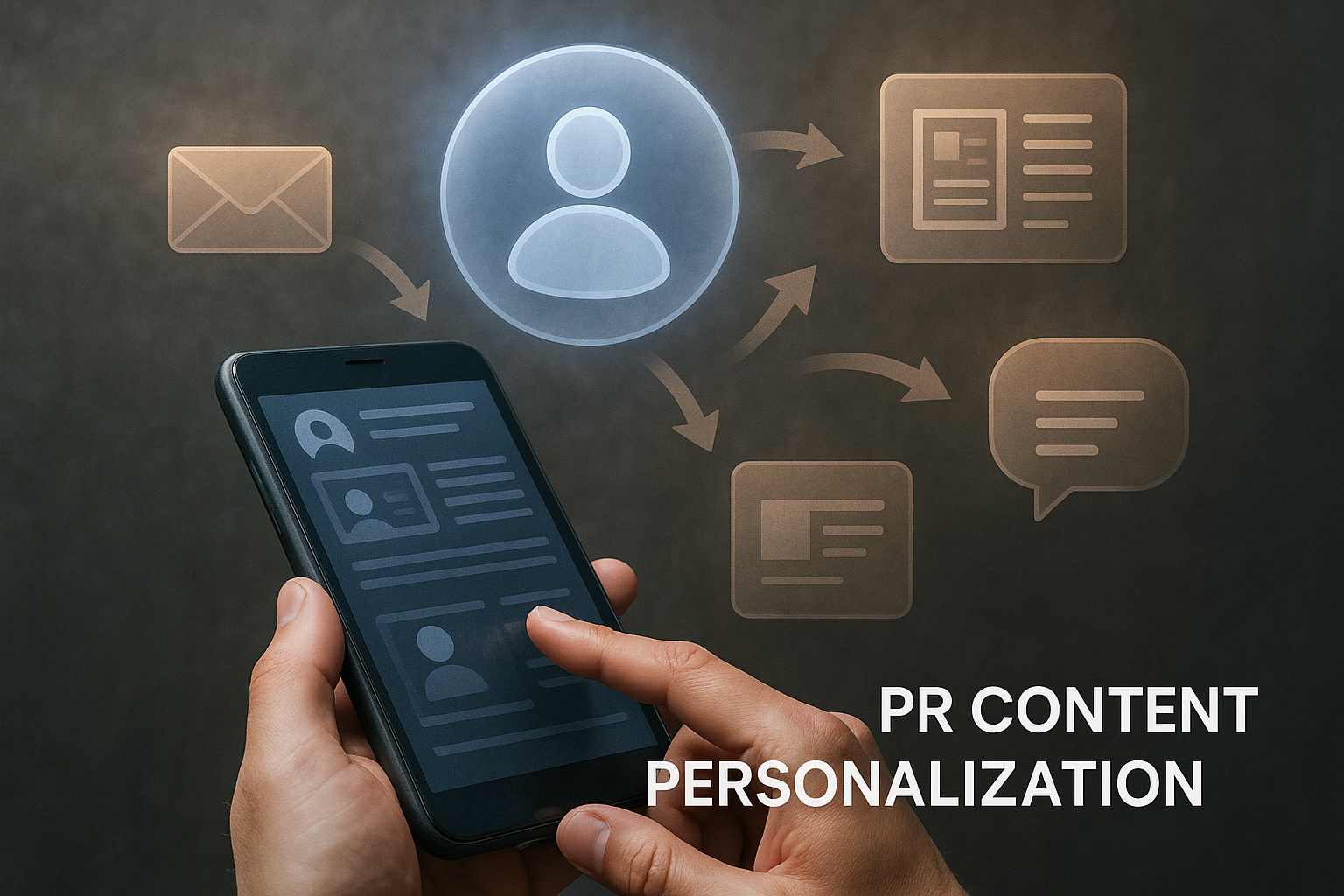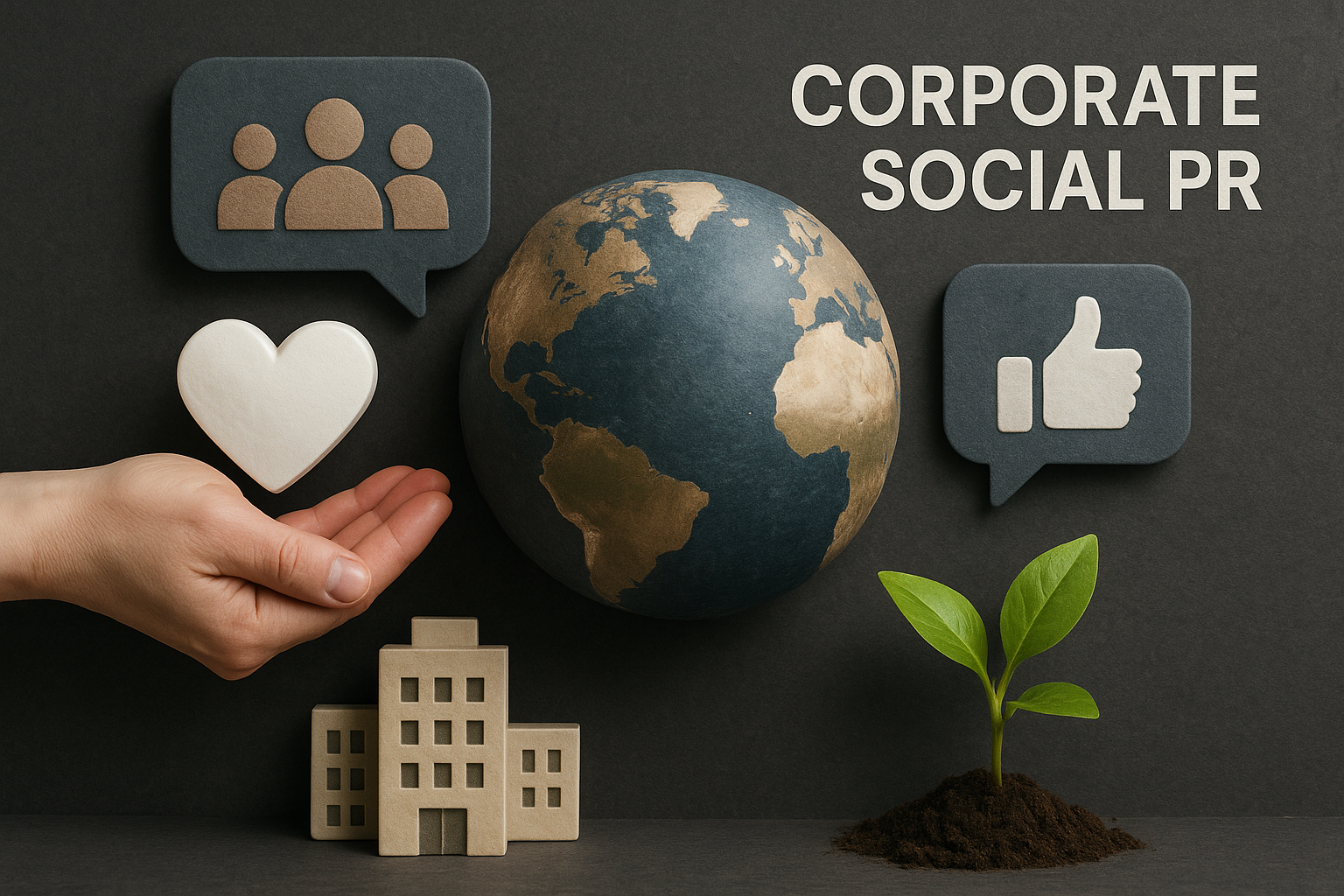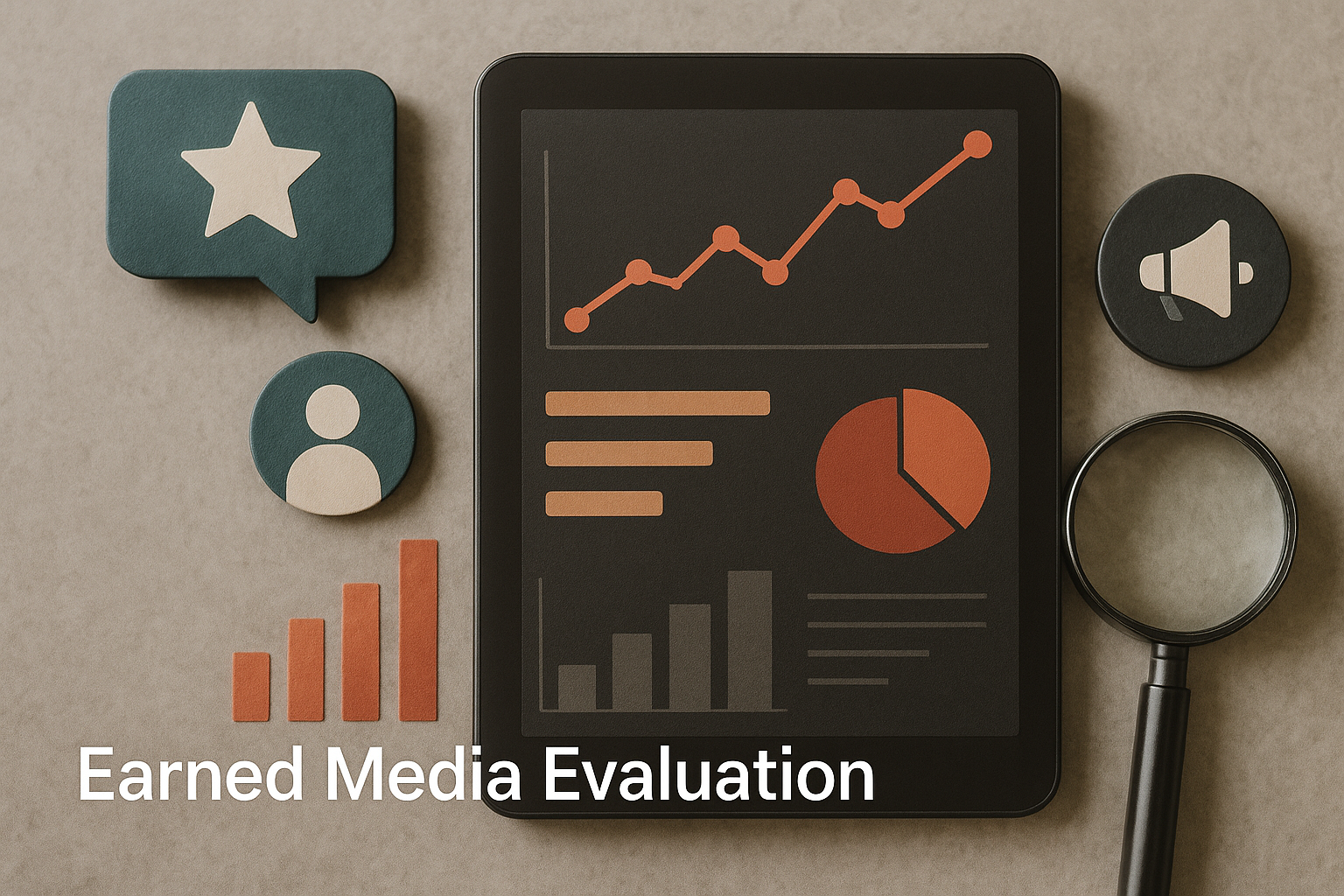From automated media tracking to predictive insights, AI in public relations is rewriting the rules and helping professionals focus on strategy over routine tasks.
PR has never been a frozen thing. It moves. It bends. And every so often, it flips on its head when a new tool barges in. Right now, that tool is AI, and honestly, it’s shaking things harder than most people expected.
Think about how it used to be. Long media lists, endless tracking, hours spent trying to figure out who covered what. Painful. Now? Algorithms handle it in a blink. They scan thousands of headlines, spot patterns before anyone notices, and can even guess how a story might play out. That’s not some sci-fi dream. It’s happening already.
Here’s the point: AI in public relations isn’t just about speed. It’s about making things sharper. It clears away the busywork so PR specialists can focus on the real stuff, strategy, ideas and storytelling.
So the real question isn’t “if.” It’s how quickly you’re ready to roll with it.
The role of AI in modern PR
Generated by AI
Public relations has always been about connection. But the way we build and manage those connections? That’s changing fast. Not too long ago, PR meant press releases, phone calls, and long hours tracking coverage. Now, with AI stepping in, the game feels different. Smarter. Faster. More precise.
Why AI matters here
At its core, PR is about telling the right story to the right people at the right time. That’s a tough balance. Audiences are scattered across platforms. News travels in seconds. Trends vanish overnight. Humans alone can’t keep pace. This is where AI in public relations makes sense. It takes the heavy lifting of scanning, analyzing, predicting and turns it into clear, usable insight.
Speed and precision
Imagine trying to track every mention of your brand across news sites, podcasts, and social media by hand. Impossible, right? AI tools can sweep through that noise in moments, picking out not just mentions, but tone, sentiment, and context. Instead of drowning in data, PR teams get exactly what they need fast.
Smarter storytelling
But speed is only half the story. AI can spot patterns people miss. It highlights which messages resonate, which headlines get traction, and which platforms actually move the needle. With that knowledge, PR pros can shape campaigns that aren’t just creative, they’re strategic. AI doesn’t write the story for you, but it gives you the map.
Balancing data with humanity
Of course, PR isn’t math alone. A story that moves people still needs human instinct. AI might tell you which direction the wind is blowing, but it won’t feel the emotion behind a journalist’s question or the nuance of cultural trends. That’s why artificial intelligence in PR strategies will never neglect the human element.
The new normal
So, the role of AI in PR isn’t about replacing jobs. It’s about sharpening them. It’s about giving professionals the tools to react quickly, make better choices, and focus on creativity instead of admin work. In many ways, AI doesn’t take the “public” out of public relations; it helps you reach that public with more clarity and confidence.
That’s why here at Impact Authority, we are experimenting with incorporation of AI in our processes, aiming to provide more advanced and impactful services to our clients. But, we also ensure that AI acts as an aid, not as a replacement of the human element of brand storytelling.
AI-driven media monitoring
Generated by AI
In PR, timing is everything. A single headline can shift perception. A tweet can spark a crisis. And missing those moments? Costly. That’s why media monitoring has always been at the core of public relations. But here’s the truth: manual tracking can’t keep up with today’s nonstop news cycle.
Enter AI.
Instead of sifting through endless feeds, algorithms do the heavy lifting. They scan thousands of outlets, blogs, and social channels at once. They don’t just catch mentions. They capture tone, context, and even intent. Suddenly, you’re not buried in data, you’re looking at a clear picture.
Beyond just mentions
Traditional monitoring showed you if your brand popped up. Useful, yes, but limited. AI takes it further. It spots patterns. It shows whether coverage feels positive, neutral, or negative. It compares how you stack up against competitors. And it does all of this in real time.
So instead of reacting days later, PR teams can adjust the narrative on the spot. That speed? It’s priceless.
Reading the room
Here’s where it gets interesting. AI doesn’t just flag your brand name. It picks up on themes, conversations, and shifts in public mood. Maybe a story is gaining traction. Maybe a topic linked to your industry is heating up. By catching those signals early, you can decide whether to join the conversation or steer clear.
This is the difference between chasing headlines and shaping them.
A global lens
Another strength of AI-driven media monitoring is reach. A story breaking in Europe or Asia might ripple into U.S. outlets hours later. Without AI, you might miss the first wave. With it, you see the spark before it becomes a fire. For global brands, that’s not just handy, it’s survival.
Human judgment still counts
Of course, AI won’t tell you what to say. It won’t sense irony in a sarcastic tweet, or know when a joke might backfire. That’s the human role. The job of AI in public relations is to hand you the clearest, fastest view possible so you can make the right call with confidence.
The bigger picture
In the end, media monitoring powered by AI isn’t about flashy dashboards. It’s about clarity. It’s about turning noise into a signal. And it’s about giving PR teams the chance to stay ahead, not just keep up.
Because in today’s world, the brand that sees first, acts first, and adapts fast that’s the one that wins.
Smarter content creation with AI
Generated by AI
PR has always been fueled by stories. A press release, a blog, a pitch to a journalist they all come down to words. But writing them takes time. And let’s be honest, not every draft is inspired. This is where AI slips in, not as a replacement, but as a helper that never runs out of energy.
Drafting the basics
Think about the routine stuff. First drafts of press releases. Quick summaries of events. Social media snippets. Instead of starting from a blank page, AI can generate a foundation in seconds. That gives PR pros something to react to, tweak, and sharpen. The creative spark still belongs to humans. The heavy lifting, though? AI takes care of that.
Tailoring the message
But it doesn’t stop at speed. AI can analyze audiences and suggest different ways of saying the same thing. Maybe your U.S. audience needs a straightforward tone. Maybe your European readers prefer more nuance. With AI tools, tailoring isn’t a guessing game, it’s data-driven.
And when every audience feels spoken to directly, your story carries more weight.
Spotting what works
Another advantage? Feedback loops. AI doesn’t just help create content. It studies how people react. Which headlines get clicks. Which subject lines get opened. Which blog posts get shared. That information feeds back into the next draft, making each piece sharper than the last.
Suddenly, you’re not just creating, you’re improving with every round.
Guarding the brand voice
Now, here’s the part that matters most. PR isn’t only about pushing words out. It’s about voice. It’s about staying true to what the brand stands for. AI can draft, but humans must refine. Professionals know when a line feels too robotic, or when humor misses the mark. That’s why the best use of AI in public relations isn’t autopilot, it’s collaboration.
The creative edge
In the end, smarter content creation with AI is less about machines writing for us and more about machines giving us space. Space to focus on big ideas. Space to craft messages that feel human. Space to think about the story behind the words, not just the words themselves.
Because at the heart of PR, content isn’t just content. It’s a connection. And while AI can set the stage, it’s people who make the story worth telling.
Personalized outreach at scale
Generated by AI
PR outreach used to be personal, but painfully slow. One email at a time. One pitch after another. Hours spent researching which journalist might care about your story. It worked—sometimes. But it also meant opportunities slipped through simply because time ran out.
The AI upgrade
Now imagine the same task, but with AI behind the wheel. Instead of guessing, AI scans databases of journalists, influencers, and bloggers. It studies their past work, their interests, even the tone of their coverage. Then it suggests who might actually be interested in your story. Suddenly, your list isn’t random—it’s targeted.
This is where AI in public relations feels less like a buzzword and more like a game-changer.
Relevance over volume
Spray-and-pray emails don’t cut it anymore. People see through generic pitches in seconds. AI helps shift the focus. It allows PR teams to personalize messages, even at scale. Journalists get pitches that speak to their beat. Influencers receive proposals that match their audience. Instead of “Dear Editor,” they read something that feels written just for them.
Predicting engagement
But it doesn’t stop there. AI can also predict which contacts are more likely to open, click, or respond. By learning from past interactions, it prioritizes outreach. That means less time wasted, more conversations started. PR teams don’t just send them.
Keeping the human touch
Of course, personalization isn’t only about data. A line of warmth. A touch of humor. A sense of timing. That can’t be automated. What AI provides is the groundwork: the who, the when, the what. What humans add is the why. Together, the mix feels efficient and authentic.
The scale factor
Here’s the real win. With AI, a team of three can achieve the output of a team of thirty. Not by sending more messages, but by sending smarter ones. That scale opens doors. It means startups can compete with big brands. It means global campaigns can feel local, even personal.
Shaping the future of outreach
In the end, personalized outreach at scale isn’t about replacing relationship-building. It’s about making it possible again in a world drowning in noise. With AI filtering, guiding, and predicting, PR professionals can focus less on logistics and more on building trust.
Because at the heart of outreach, it’s never about sending the most emails. It’s about starting the right conversations and keeping them alive.
AI-powered crisis management
Generated by AI
A crisis in PR doesn’t send an invitation. It just shows up loud, messy, and fast. One bad headline. One viral post. One customer complaint that snowballs into something bigger. By the time teams notice, the damage may already be spreading.
Seeing sparks before the fire
AI tools can scan social media, news feeds, and forums around the clock. They don’t just look for mentions. They watch for sudden spikes, unusual patterns, or a shift in tone. Maybe complaints about a product are climbing. Maybe a hashtag is starting to trend in the wrong direction. Instead of finding out when it’s everywhere, you get the alert while it’s still small.
Predicting what might come
It doesn’t end with alerts. AI can forecast potential outcomes by comparing current chatter with past incidents. If a story starts to look like a previous scandal, PR teams know the stakes early. That kind of foresight gives space to prepare statements, align leadership, and plan next steps before the spotlight turns harsh.
Quick but careful responses
When things do go public, timing is everything. AI can draft suggested responses, highlight talking points, and pull relevant facts in seconds. The goal isn’t to replace a human spokesperson. The goal is to help them respond quickly, without losing accuracy.
So instead of scrambling, teams step into the conversation with clarity and control.
Keeping perspective
Of course, AI can’t read emotion the way humans do. It won’t know when a community needs empathy more than statistics. That’s why AI in public relations works best as a guide, not a driver. It provides the signal, but humans decide the tone.
Learning after the storm
Crisis management doesn’t end once the dust settles. AI can review how a situation unfolded, what messages worked, and where responses lagged. That feedback becomes training for the next storm. Each crisis handled makes the system smarter. Each lesson stored makes the team stronger.
A stronger safety net
At its core, AI-powered crisis management is about building a buffer. It’s about catching problems early, reacting fast, and learning from every stumble. In a world where news spreads in minutes, that buffer isn’t optional anymore. It’s essential.
Data-driven insights & strategy
Generated by AI
PR has always leaned on instinct. A sense of what story might land. A guess about how people will react. Sometimes those instincts hit the mark. Other times, not so much. Today, though, instincts don’t have to work alone. Data can back them up. And AI is the engine that turns raw data into real insight.
From noise to clarity
Every campaign leaves a trail of mentions, clicks, shares, comments. The problem is volume. There’s too much of it for humans to sort through in time. AI can cut through the clutter. It spots which messages travel far, which ones fizzle, and which ones spark unexpected conversations. Suddenly, you’re not guessing. You’re working with evidence.
Measuring what matters
Traditional PR metrics were limited: impressions, circulation numbers, vague estimates of reach. Useful, but shallow. AI tools dig deeper. They analyze sentiment, track engagement, and compare performance across channels. Instead of saying “our press release reached 100 outlets,” you can say, “our story drove positive sentiment in three key markets.” That’s strategy, not vanity.
Predicting the next move
Another strength lies in forecasting. AI can model how audiences might react before a campaign even launches. It learns from past outcomes and applies those lessons forward. Maybe it predicts that a certain headline will land better in Asia than in Europe. Maybe it shows which topics are about to trend. With that foresight, PR teams can plan smarter, not harder.
Turning insight into action
But here’s the key: data only matters if you act on it. AI in public relations doesn’t just hand you charts. It points toward decisions. Do you double down on video because that’s what’s gaining traction? Do you shift resources to social channels where engagement is rising? The insights aren’t just interesting, they’re practical.
Keeping humans in charge
Still, numbers don’t replace judgment. Data might tell you what’s popular, but humans decide what’s right for the brand. Sometimes the best move isn’t the most obvious one. That’s why AI works best as a compass, not a captain. It shows direction, but people choose the path.
Building sharper strategies
In the end, data-driven insights aren’t about drowning in analytics. They’re about clarity. They give PR teams the confidence to back up decisions, adjust on the fly, and prove impact to stakeholders. And that proof matters more than ever.
Because strategy is built on numbers and instincts together? That’s where PR finds its edge.
Ethical considerations in AI PR
Generated by AI
AI brings speed, clarity, and reach. But with that power comes risk. In public relations, where trust is everything, those risks can’t be ignored. After all, what’s the value of sharper tools if they damage credibility in the process?
The bias problem
Algorithms learn from data. If the data is flawed, the output will be flawed too. That means AI might misread sentiment, favor certain voices, or overlook others entirely. A biased system could amplify stereotypes or silence perspectives that matter. For PR teams, that’s not just a glitch, it’s a reputation risk.
Transparency matters
Then there’s the question of honesty. If AI writes the first draft of a press release or suggests a social post, should audiences know? Most people don’t like the idea of being misled. Using AI in public relations means being clear about where automation ends and human input begins. Transparency builds trust. Hiding the process erodes it.
Privacy at stake
AI thrives on data. But whose data is it? Tracking conversations, scanning profiles, and monitoring mentions can raise ethical red flags. People expect brands to respect boundaries. If monitoring feels like surveillance, the backlash can hit harder than the crisis you’re trying to prevent. Respecting privacy isn’t optional. It’s part of protecting reputation.
The human line
There’s also the danger of over-relying on automation. AI can suggest responses in a crisis, but it can’t show empathy. It can predict trends, but it can’t feel cultural nuance. The heart of PR is still human. Without that, messages risk sounding hollow or even tone-deaf. AI should guide, not replace, the human voice.
Balancing efficiency and ethics
The real challenge is balance. AI saves time and sharpens strategy, but ethics set the guardrails. Brands that rush headfirst without considering these issues may win short-term gains but lose long-term trust. And in PR, trust is the currency that matters most.
Looking ahead
Ethical use of AI isn’t a side note. It’s central to its future in PR. Teams that build guidelines now on bias, transparency, and privacy will set themselves apart. They’ll not only use AI smarter, but also use it responsibly.
Future of AI in public relations
Generated by AI
The future of PR doesn’t look like the old press release days. It feels more alive, more unpredictable. AI is right at the center of that shift, but not in the way many people fear. It’s less about robots taking over jobs and more about changing how stories reach people.
Stories with more heart
Right now, AI tools tidy up sentences and suggest catchy headlines. Tomorrow, they’ll do more. They’ll shape stories that feel closer to real conversations, stories that notice tone, culture, even the mood of a community. Instead of broad, one-size-fits-all messages, brands could send out something that feels like it was written just for you. And that’s powerful.
Seeing ahead, not just reacting
PR has always been about responding fast. A crisis breaks, and teams jump in. But future AI might flip that. Imagine a tool that spots a problem bubbling online before it explodes. Or one that notices a new trend weeks before it hits mainstream media. That’s not magic, it’s pattern spotting at a scale no human can match.
Personalization, rewritten
Email greetings with your name? That’s old news. Soon, campaigns could shift in real time, tuned to values, beliefs, or even emotions of a certain group. It’s less like broadcasting and more like talking. Brands won’t just speak at people; they’ll speak with them.
The human touch still matters
But let’s be clear, machines can’t replace everything. They don’t feel empathy, they don’t read a room the way people do. PR still needs human instincts: the gut check, the sense of timing, the creative spark. The future looks brightest when humans and AI work together, each covering what the other lacks.
Looking ahead
So where does this go? The future of AI in public relations is bold, maybe a little uncertain, but exciting. Smarter tools will arrive. Campaigns will sound more personal. Insights will run deeper. Still, balance will matter. AI can help with speed and scale, but humanity has to stay at the heart of every story.
Conclusion
PR has always been about people. About stories, trust, and connections that feel real. Now, we’ve got new tools on the table. Smarter ones. Faster ones. And yes—AI is part of that.
But here’s the truth: AI in public relations isn’t here to replace the storyteller. It’s here to back them up. To sift through noise, catch signals, and give PR teams more room to focus on what matters—the human side.
The future? It won’t be man or machine. It’ll be both. Working together. Learning from each other. And if we get that balance right, PR won’t just keep up with change—it’ll lead it.




